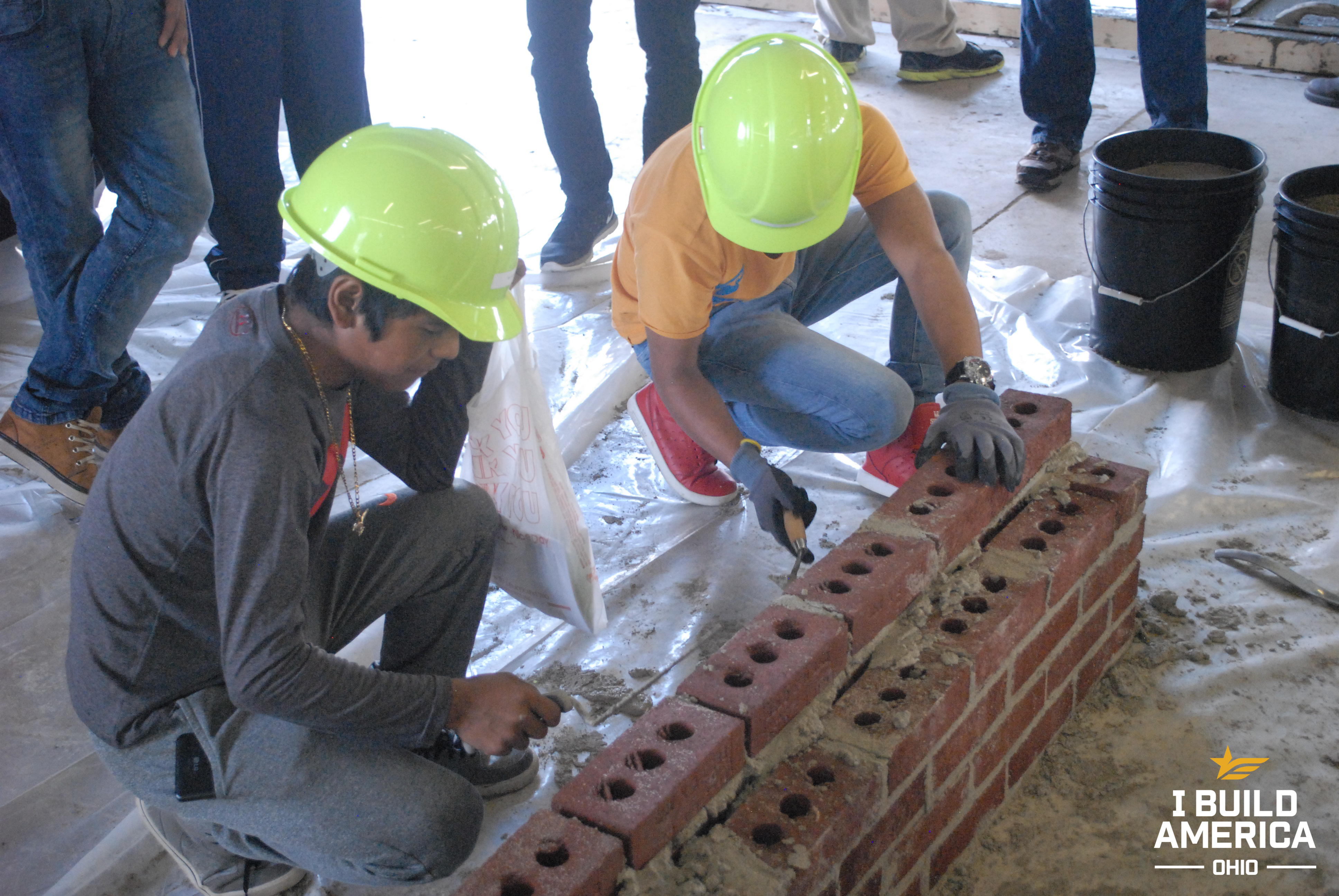
In our last Featured Position post, we shared the important work that roofers do in their day-to-day job and the steps it takes to get there. But without the work of today’s featured position, our structures would be left incomplete. Roofers may (literally) put a roof over our heads, but bricklayers are the backbone of our buildings.
Bricklayers, also known as brick masons, build with sturdy brick and concrete blocks to create secure structures. When you think of brick, you probably picture a brick home, but bricklayers may use their technique to also do things like:
- Lay bricks for patios or walkways.
- Line chimneys and fireplaces, including firebricks in industrial chimneys and smokestacks.
- Restore, clean, or paint existing brick structures.
- Line furnaces and boilers with acid-resistant bricks.
We all know – and appreciate – the results of a bricklayer’s hard work, but what exactly goes into the average work day? Daily responsibilities vary, depending on the specific project, but these tasks are typical:
- Reading blueprints to calculate what is needed for the project.
- Following plans to create patterns and foundations.
- Cutting and trimming materials with hand and power tools.
- Constructing with mortar and grout, including around corners, always aligning vertically and horizontally.
- Cleaning up excess mortar and grout.
Given these daily tasks, the following skills and traits are helpful in a bricklayer position:
- Physical strength
- Bricklayers should be able to lift at least 50 pounds, as they work with heavy tools, equipment, and other materials, such as bulky bags of mortar and grout.
- Physical stamina
- Bricklayers must keep a steady pace while setting bricks. Bricks on their own are not necessarily heavy, but continuous lifting and setting before mortar hardens can be tiring for some.
- Dexterity.
- Not only do bricklayers need to keep a steady pace, they must place each brick with precision.
- Hand-eye coordination
- In addition to dexterity, excellent hand-eye coordination helps bricklayers apply even layers of mortar and grout, properly set bricks, and clean up excess mortar and grout before it hardens.
- Creativity
- Not only do bricklayers need to follow blueprints and plans, they must be able to provide creative solutions when problems arise.
If these day-to-day tasks sound exciting and the skills and traits sound like you, it’s time to begin your journey to a career as a bricklayer. Training is informal, but most have a high school degree or equivalent. Technical schools help to continue education with specialized training that will help you land a bricklayer position.
No matter if you’re coming straight from high school or you take the technical school route, we highly recommend opting for an apprenticeship. If you’ve been following along with us, you know the value we place on apprenticeships. Not only do apprenticeship programs help you earn great money as you learn valuable skills, but apprentices also have an increased likelihood of job placement.
Speaking of earning, How are bricklayers compensated?
According to the U.S. Bureau of Labor Statistics, the average bricklayer earns more than $25 per hour with an annual salary of about $53,000. Not only do bricklayers currently make a great income, the job growth is faster than the national average. From 2018-2028, employment is projected to grow by 11%.
There’s no better time than the present to begin your career in construction. Contact us to learn more about how you can build the career of your dreams as you build our state’s future.